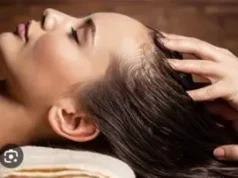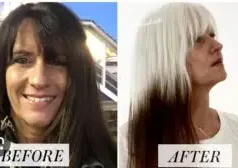Most individuals are aware of the crucial function haircuts and trims play in maintaining healthy hair. You might not be aware of how frequently you should receive them, though.
So, how frequently should your hair be cut to maintain its health? This post is for you if you want to maintain the health of your strands or keep your hairstyle appearing stylish.
We’re going to assist you in determining how frequently you should get a haircut today. Stay with us until the end so we can address some of your other haircut-related inquiries!
How Often Should You Cut Your Hair or Trim It
How often you should cut or trim your hair depends on several factors, including your hair type, hair goals, and the overall condition of your hair. Here are some general guidelines for different scenarios:
- Regular Trims:
- For maintaining healthy hair and preventing split ends, it’s generally recommended to trim your hair every 8 to 12 weeks (about every 2 to 3 months). This frequency can help keep your hair looking neat and well-maintained.
- Long Hair:
- If you have long hair and are not concerned about split ends, you may be able to go longer between trims, such as every 12 to 16 weeks (3 to 4 months). However, be vigilant about any signs of damage.
- Short Hair:
- Short haircuts often require more frequent maintenance, typically every 4 to 8 weeks. This helps maintain the shape and style of the haircut.
- Hair Goals:
- If you’re actively trying to grow your hair, regular trims can still be beneficial. Trimming every 8 to 12 weeks helps remove any split ends that can impede growth and gives your hair a healthier appearance.
- Damaged Hair:
- If your hair is severely damaged or has excessive split ends, you may need more frequent trims until the damaged portions are removed. Once the damage is gone, you can return to a less frequent trimming schedule.
- Texture and Type:
- Coarser hair textures may not require as frequent trims as finer hair, which can be more prone to breakage and split ends.
- Personal Preference:
- Ultimately, how often you trim your hair can also depend on your personal preference and how you like your hair to look and feel. Some people prefer a very polished look and may choose to trim more often.
It’s important to note that the primary purpose of trimming is to remove split ends and maintain the overall health of your hair. Trimming does not make your hair grow faster; it simply ensures that the hair you have stays healthy and looks its best.
If you’re unsure about the right trimming schedule for your hair, consult with a professional hairstylist. They can assess the condition of your hair, discuss your hair goals, and recommend a trimming schedule tailored to your specific needs.
Also Read: side effects of Using Clove Water For hair Growth
Is Hair Healthier After Cutting?
You’ll undoubtedly notice that your hair feels and looks great after a thorough haircut. That’s because after a haircut, your hair is considerably healthier. Your hair’s very ends are taken off during haircuts.
Your hair’s ends are also the oldest part of it, making them far more fragile. The ends of your hair start to separate as they become damaged.
Additionally, they grow tough, jagged cuticles that can tangle and knot when they come into contact with one another.
Since your hair can’t retain moisture, you’ll also notice that it feels dry and stiff. Fortunately, haircuts help remove current damage and reduce the likelihood of more harm.
What Happens if You Don’t Cut Your Hair for a Year?
Even with a wholesome, organised haircare programme, some damage is unavoidable. Your hair can be harmed by simple actions like washing, styling, and going outside. So if you skip trims for a year, you’ll undoubtedly notice a lot of breakage and split ends.
Your hair may appear more lifeless and struggle to maintain a style.
If you naturally have curly or wavy hair, you can probably notice a lot of knots. Additionally, the eventual trim will result in more hair loss the longer you go without a haircut. Therefore, throughout the year, get your hair cut for the greatest outcomes.
Can Cutting Your Hair Help It Grow?
It’s a frequent misperception that haircuts encourage faster hair growth. Your growth rate won’t be affected by hair cuts. However, it might make it simpler to let your hair grow out.
As you now understand, damage doesn’t just begin at the ends of your hair.
Your locks will also grow thinner and shorter as the breakdown progresses higher. Due to your progress being undone, it may be impossible to grow your hair out as a result.
The good news is that regular trims and haircuts maintain healthy hair ends. Additionally, all of your newly grown hair will stay on because it isn’t falling out.
Also Read: Mix Purple And Blue Hair Dye
How to Tell When You Need a Haircut
Knowing when it’s time for a haircut is important for maintaining healthy and well-groomed hair. Here are some signs that indicate you may need a haircut:
- Split Ends: Split ends are a common sign that it’s time for a trim. If you see frayed or split ends when you examine your hair closely, it’s a clear indication that you need a haircut.
- Uneven Length: If your hair has become uneven in length or you’ve lost the shape of your hairstyle, it’s time for a haircut to restore a more polished look.
- Difficulty Styling: When your hair becomes difficult to style or doesn’t hold a style well, it may be due to excessive length or damage. A haircut can improve manageability.
- Excessive Breakage: If you notice more hair breakage than usual, especially during brushing or styling, it could be a sign that your hair is damaged or overgrown. Trimming can help prevent further breakage.
- Lack of Volume: If your hair appears flat and lacks volume, it may be weighed down by excessive length or damaged ends. A haircut can add body and bounce to your hair.
- Tangles and Knots: Hair that frequently tangles or forms knots can be a sign of damage or overgrown hair. Trimming can reduce tangles and make your hair easier to manage.
- Dry or Brittle Ends: When the ends of your hair feel excessively dry, brittle, or rough to the touch, it’s a sign of damage. Trimming can remove the damaged ends and improve the overall condition of your hair.
- Frequent Shedding: While some hair shedding is normal, if you notice an increase in hair shedding or find more hair in your brush or shower drain, it may be due to breakage or damage that can be addressed with a haircut.
- Change in Texture: If your hair texture has changed, such as becoming frizzy, overly curly, or unruly, it could be due to damage or excessive length. A haircut can help restore your desired texture.
- Personal Preference: Sometimes, you may simply prefer a shorter or different hairstyle. Your personal style and preferences can be a valid reason for getting a haircut.
Keep in mind that the frequency of haircuts can vary depending on factors like your hair type, how quickly your hair grows, and your desired hairstyle. For many people, trimming every 8 to 12 weeks is a common guideline, but you should tailor your haircut schedule to your individual needs and goals. If you’re unsure, consulting with a hairstylist can help you determine the best timing for your next haircut.






